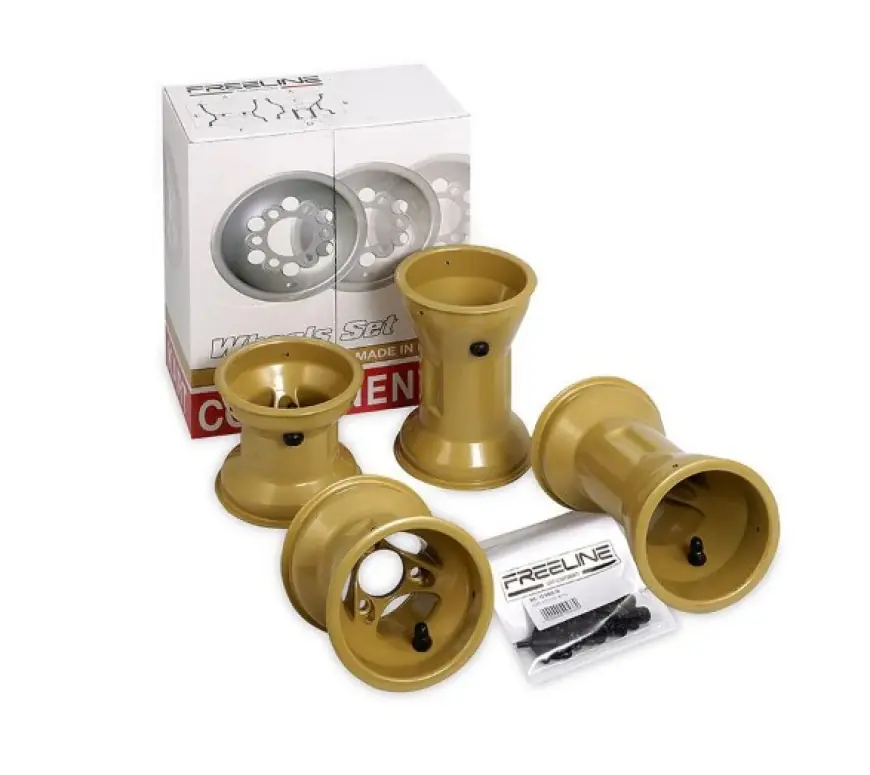Understanding Kart Wheel Sizes and Their Impact on Handling

Whether you're new to racing or an experienced driver fine-tuning your machine, understanding how different wheel sizes affect performance is essential when selecting a kart with wheels tailored to your driving style. The size and design of your kart wheels play a major role in how the vehicle behaves on the track, especially when it comes to grip, acceleration, cornering, and overall stability.
Wheels are more than just a means to keep the kart rolling—they are integral to your vehicle's balance and response. The diameter, width, and material of kart wheels influence not only how the chassis interacts with the track but also how your tires wear over time. By choosing the right size and configuration, you can optimize handling under various track conditions and racing formats.
Front vs. Rear Wheel Sizing
Karts typically have smaller front wheels and larger rear wheels. This setup helps maintain better steering responsiveness and overall traction. Front wheels usually range between 5 to 6 inches in diameter, while rear wheels may go up to 7 or 8 inches.
Smaller front wheels reduce rotational mass, allowing for quicker directional changes. This is ideal for tracks with sharp turns. Larger rear wheels, on the other hand, improve power delivery and stability, especially when accelerating out of corners. The difference in size between the front and rear wheels also affects the kart’s center of gravity and weight transfer, impacting how the vehicle feels during high-speed maneuvers.
How Diameter Affects Handling
Larger diameter wheels tend to increase ground clearance slightly and alter the gearing ratio. This can reduce acceleration but increase top-end speed. On the other hand, smaller diameter wheels lower the center of gravity, resulting in better cornering grip and sharper handling, though you may sacrifice some straight-line speed.
Choosing between larger and smaller wheels depends on the track layout. Tight, technical circuits benefit from smaller wheels, while longer tracks with sweeping turns may favour the high-speed stability of larger wheels.
Wheel Width and Tire Contact Patch
Wheel width directly affects the tire’s contact patch—the area of the tire that meets the road. Wider wheels offer more surface area, increasing grip, but they also add weight. This added weight can impact acceleration and responsiveness, particularly on slower tracks.
Narrower wheels, in contrast, reduce rolling resistance and weight, improving quick handling and initial acceleration. However, they may lead to quicker tire wear and reduced grip on high-speed corners. Balancing width and grip is crucial, especially when tuning a kart for variable conditions or different race formats.
Material and Construction
Most kart wheels are made from aluminium or magnesium. Aluminium wheels are affordable and durable, making them a common choice for beginners and recreational drivers. Magnesium wheels, while more expensive, are significantly lighter and provide better heat dissipation. This helps prevent tire overheating and maintains consistent handling during long races.
The stiffness of the wheel also affects performance. A stiffer wheel transfers more force to the tire, which can improve responsiveness but may feel harsh on bumpy tracks. More flexible wheels offer a smoother ride but may delay steering feedback. Your choice should reflect both your skill level and the track conditions you face.
Tire Fitment and Pressure Considerations
Wheel size also determines what types of tires you can use. Tire manufacturers provide specifications that are optimized for particular wheel diameters and widths. Mismatched sizes can lead to uneven wear, poor handling, and even tire failure.
Tire pressure is another factor that interacts closely with wheel size. Smaller wheels often require more precise pressure adjustments because the margin for error is reduced. The wrong pressure can negate the benefits of an otherwise perfect wheel setup.
Track Conditions and Weather
Weather and surface conditions should never be overlooked. Wet or slippery tracks require different tire and wheel setups compared to dry, grippy circuits. Smaller, narrower wheels can sometimes cut through standing water better, while larger wheels paired with soft-compound tires provide more control on loose or dusty tracks.
If you're racing on multiple track types, you may need to keep different wheel sets on hand for each scenario. Adapting your setup to the environment can mean the difference between finishing mid-pack and taking the checkered flag.
Conclusion
Selecting the right kart with wheels isn't just about looks or compatibility—it’s a technical decision that significantly affects handling, grip, speed, and safety. Understanding the role that wheel diameter, width, material, and construction play in kart performance allows drivers to fine-tune their setup for optimal results on any track.
The ability to customize wheel setups is one of the many reasons karting is such a precise and rewarding sport. From novice drivers to competitive racers, selecting high-quality kart parts—including the correct wheel size—is key to achieving peak performance and consistency throughout the season.
What's Your Reaction?
 Like
0
Like
0
 Dislike
0
Dislike
0
 Love
0
Love
0
 Funny
0
Funny
0
 Angry
0
Angry
0
 Sad
0
Sad
0
 Wow
0
Wow
0
















































